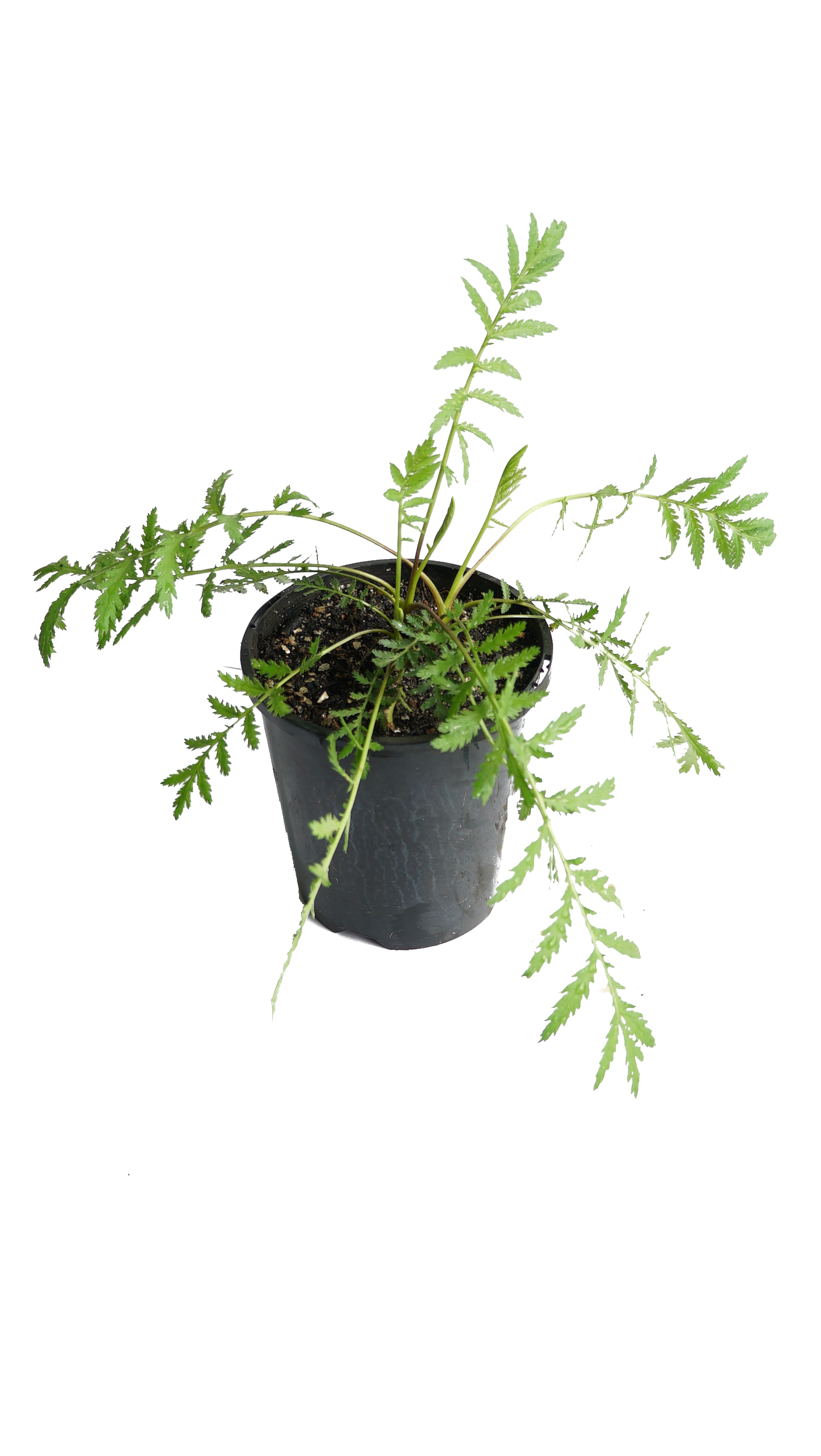 Image 1 of 1
Image 1 of 1


Tansy Plant
“Tanacetum vulgare”
Plant Availability: Spring to Autumn
Pot Size: 1L
Benefits
Traditionally used as a natural insect repellent, especially for ants, flies and moths. Can be used in small amounts medicinally for digestive complaints and fevers. Attracts beneficial pollinators while also deterring some pests in the garden. Safe to grow near chickens as it helps repel mites and lice from their coop and nesting areas.
Growing Conditions
Season: Spring to Autumn
Soil: Prefers well-draining soil, tolerant of poorer soils
Watering: Low to moderate water needs once established
Position: Full sun to part shade
Fertilising: Minimal feeding required, occasional compost or liquid feed
Use
Fresh or dried leaves and flowers can be used around the home as an insect deterrent. Dried flowers were traditionally used in sachets and potpourri. Not recommended for internal use without professional guidance due to potential toxicity. Can be scattered in chicken nesting boxes to deter pests.
Growing Tips
Tansy can spread vigorously, so it is best grown in pots or controlled areas of the garden. Prune regularly to manage growth and encourage bushier plants.
Companion Plants
Grows well near fruit trees and roses where it helps deter pests. Can also be planted alongside cucumbers and squash to reduce beetle problems.
“Tanacetum vulgare”
Plant Availability: Spring to Autumn
Pot Size: 1L
Benefits
Traditionally used as a natural insect repellent, especially for ants, flies and moths. Can be used in small amounts medicinally for digestive complaints and fevers. Attracts beneficial pollinators while also deterring some pests in the garden. Safe to grow near chickens as it helps repel mites and lice from their coop and nesting areas.
Growing Conditions
Season: Spring to Autumn
Soil: Prefers well-draining soil, tolerant of poorer soils
Watering: Low to moderate water needs once established
Position: Full sun to part shade
Fertilising: Minimal feeding required, occasional compost or liquid feed
Use
Fresh or dried leaves and flowers can be used around the home as an insect deterrent. Dried flowers were traditionally used in sachets and potpourri. Not recommended for internal use without professional guidance due to potential toxicity. Can be scattered in chicken nesting boxes to deter pests.
Growing Tips
Tansy can spread vigorously, so it is best grown in pots or controlled areas of the garden. Prune regularly to manage growth and encourage bushier plants.
Companion Plants
Grows well near fruit trees and roses where it helps deter pests. Can also be planted alongside cucumbers and squash to reduce beetle problems.







